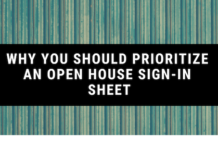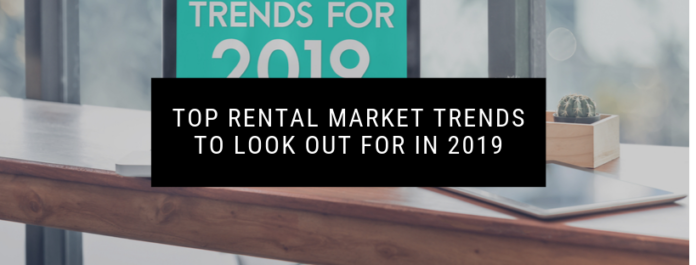The rental market in the United States has been booming in recent years. If you’re thinking about investing in the real estate market in 2019 or 2020, the are a few key things you should be studying.
Despite inflation, trade deals, new construction, and housing market trends, rental rates in the United States keep rising.
Here’s what we know and how the future looks for the U.S. rental market.
Rental Market Analysis
If you’re a landlord or real estate investor, studying the housing market is always a smart busies decision.
Not only is it a good indicator of how real estate is doing, but the housing market can also tell us a lot about the current state of our economy.
With rentals specifically, we’re seeing a rise in rents despite how construction, inflation, or what other real estate trends are doing. This shows us that property values are doing well, and rental ROI is good.
We can assume from this that rental real estate is a lower risk than many other types of investments in today’s market. There are also fewer apartments for rent out there which is a good problem to have if you’re an investor.
Rental Prices are Still Rising
According to a new report published by RentCafe, the average apartment rent increased by 3.2% or $45 since last year. It’s also gone up 0.8% pr $12 month over month.
Since the first half of 2019, the average rent in the United States has gone up by 2.6% or $37. June brought the biggest price increase in rents as this is also the most popular time of the year for signing a new lease.
According to the report, renters are paying $45 more this June than they did last June.
Average Apartment Rent
The average apartment rent in the United States reached $1,4365 in July 2019.
Wichita, Kansas tops the list for the country’s most affordable rent, at $656 per month. The monthly rent in Manhattan will cost you $4,190 per month on average. It’s no surprise that Manhattan has the highest rent in the country.
Massachusetts and California both have cities that are next on the most expensive list. San Fransisco has an average monthly rent of $3,697 and Boston rounds out the top three with a $3,509 average monthly rent.
San Mateo has an average rent of $3,349 per month and Cambridge rents are running near $3,210 monthly.
After Wichita, Kansas, the next most affordable places to rent are Tulsa, Oklahoma with an average monthly rent of $696 and Toledo, Ohio with a monthly rent of $721 on average.
Texas is also one of the most affordable states to rent in with rents in Brownsville averaging $726 per month and $736 in Amarillo.
Renter Hubs
The most expensive cities to rent in are still some of the largest and most popular. With Manhattan in the $4,000 and Los Angeles, Washington, DC, and Seattle averaging around $2,000 and $2,500.
Denver, Colorado and Chicago, Illinois are also two renter hubs with rents above the national average of $1,465. Renters in these hubs will see rents around $1,670 in Denver and $1,990 in Chicago.
Chicago saw an increase of 4.8% from last June while Denver saw their rents rise 3.6%.
The most budget-friendly renter hub is in Indianapolis. Rents in Indianapolis average out to $877 per month. They saw a 2.8% increase since the beginning of 2019.
After Indianapolis, there is Columbus Ohio with an average rent of $940, San Antonio with rents near $1,039 and Phoenix with rents around $1,084. Phoenix has experienced a nice uptick in rent recently. Since the start of the year, rent in Phoenix has increased by 5.8%.
Large Cities Where Rents are Lower Than January 2019
Despite Manhattan being the most expensive city to rent in, their average rent is actually down by 0.1% since the start of the year. This is around $6 lower than January 2019.
Should You Invest in the Rental Market?
Occupancy rates say a lot about the state of a real estate market. The occupancy rate is the number of apartments on the market and how many are actually occupied by renters.
For cities in the United States with strong economies, occupancy rates have been on the rise according to the Census Bureau.
Occupancy rates are ruled by supply and demand. The stronger the desire for an apartment or multi-family unit, the higher the occupancy rate is.
The vacancy rate is calculated by multiplying the number of empty units by 100 and dividing that number by the total number of units in the building.
Occupancy Rate Drivers
While occupancy rates have been on the rise, occupancy rates for luxury apartments have actually lowered. This shows us that price is a determining factor.
Other contributors to occupancy rates include:
- Employment trends and millennials
- Housing supply New construction growth
- Immigration
- Rental prices
- Location and desirability
- Condition of the apartment and building
High Price and Low Availability
The drivers of occupancy rates can affect the overall housing market. When we see a market with higher prices and lower availability in rentals, these drivers make all of the difference.
With the current state of the economy, inflation, immigration, and the cost of living, rentals have increased in popularity in recent years.
If buyers are uncertain about the country politically or if the economy is doing well but possibly not stable, home shoppers may turn to rent an apartment over buying.
This leads to a shortage of units, driving the prices up.
Why Rent Instead of Buy?
There are several reasons why someone might rent an apartment or home instead of buying one.
Cashflow is a big reason. If the buyer pool is younger and they don’t have a lot of money saved for a down payment, they may opt to rent instead of buy.
Rentals also offer a lot of flexibility when it comes to leasing terms which can be helpful for people who move or travel for work often. It’s a lot easier to break a lease and move than sell a home.
On that note, if you knew you were moving to another state, for example, you’d likely rent over buying to not lose money on the sale. While ideally, the value of a home would go up, it likely won’t increase enough to cover all of the costs of moving in a short time frame.
Another key benefit of renting is that you usually aren’t responsible for any upkeep or maintenance. A home may require lawn and yard work, upkeep, and higher utility bills to keep it running.
With a rental, maintenance is usually taken care of. You don’t have to keep up with the yard work or fix something that breaks. If your oven breaks, you can usually call your landlord for a quick fix.
Location Plays a Role
In some cities, the cost of living and real estate is just too high for many home buyers. People in higher-priced markets such as San Fransisco or Manhattan, just can’t afford to buy a home.
With housing costs so high, renting is the only option in many cases.
There are also some markets where homes have reached their peak. Sellers who try to sell their homes and can’t turn to renters to help pay their mortgage and also to capitalize on the low supply.
If you live in a safe area with good school and easy access to transportation, you’re likely in a good real estate market. This could mean that housing prices are high and there may be very few single-family homes for rent.
For families who need to rent instead of buy, single-family homes or larger apartments may be scare. You’ll see these rent at a premium in nicer areas with good schools and amenities.
There are More Renters
When you see a higher occupancy rate, this means there are just more renters right now. There are some groups of people that will always see a higher amount of renters.
Students, young adults, singles, and frequent travelers are all groups of people who will likely rent instead of buy. Older adults and seniors may also fall into this category.
With so many baby boomers entering retirement, we may see a surge in older renters. For older adults, apartments can be a great place to spend your golden years.
With an apartment, you’ll typically have a lower housing cost per month which can help those on a fixed income. You’ll also have your home maintenance taken care of. There’s no lawn to mow, snow to shovel, or roof to fix on an apartment. These are all positives for seniors and retirees.
The Rental Market Outlook
The average apartment rent is currently on the rise in the United States. In most of the country, rents have risen from January to June of this year.
This is all great news if you’re a landlord, property manager, or real estate investor looking to get into the rental market. In nice areas with good schools, public transportation, and safety, you’ll see renters paying a premium due to a lack of supply.




















